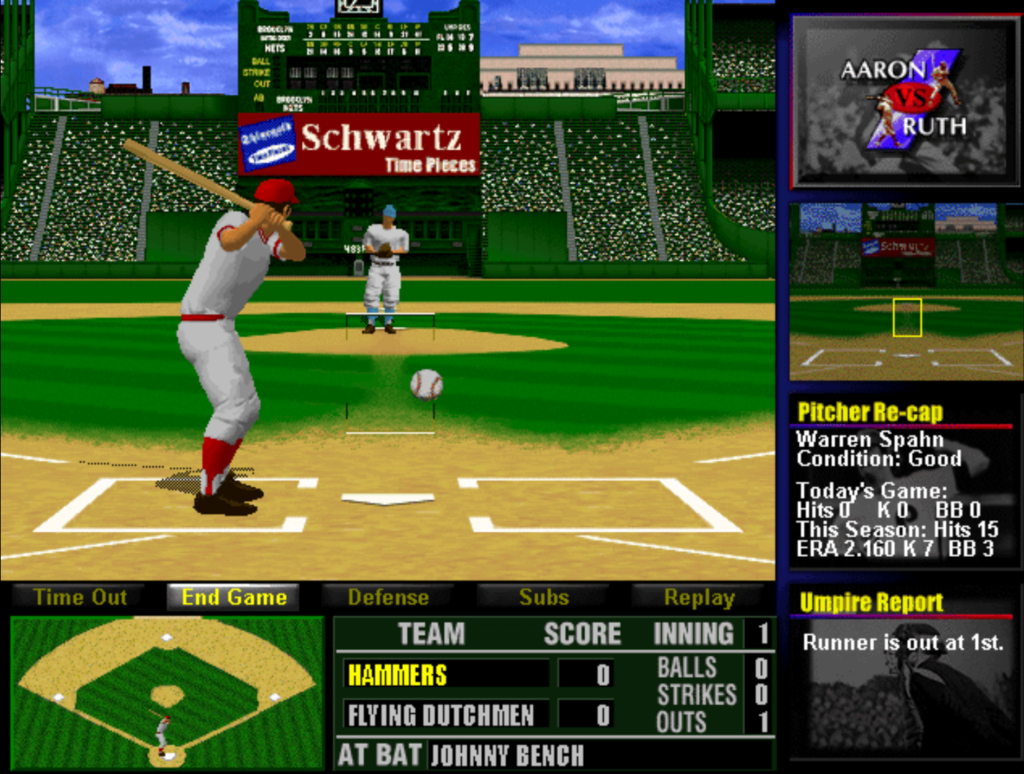
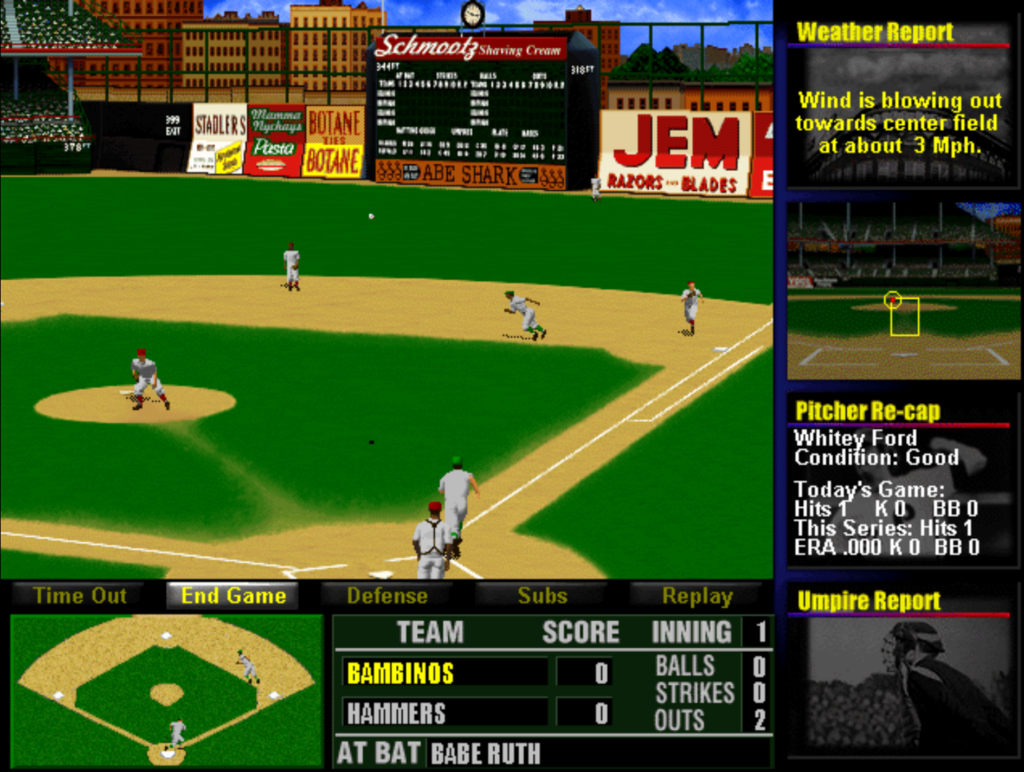
Developer – NuFX
Publisher – Mindscape
Release Year – 1997
Platforms – Windows PC
Credits
Programmers: Gordon Read, Jonathan Murfey, David Crain, Greg Bungo
Graphic Artists: Lisa Clarizio, Scott Nychay, Jim Prokop, Marc Brinkley, Chad Dirks, Dave Pasciuto
Producers for NuFX, Inc.: Patrick Quinn, Lou Haehn
Associate Producer: Jim Prokop
Music and SFX: Brian Schmidt
Voice Actor: Fred Young
Game Concept and Design: Barr Entertainment
Motion Captures: Biovision
Producers for Mindscape: Marty LaFleur, Jim Molitor, Dan Cermak
Associate Producers: Todd Morgan, Jon Howe
Motion Actors: Justin Kubiak, Mike Jacob
QA Leads: Buck Irving, Hugh Mason
QA Testers: Julius Dilag, Scott Van Schoick, John Pena, Daryl Bunting, Chris Gaffield, Enamari Roque-Vizzini, Mark Schmidt
DTS: Dyanne Boury, William Emery, Jeremy Revitch, Al Dynarski
Marketing Coordinators: Ruth Weston, Shannon Bross
Marketing Managers: Mike Lustenberger, Jeff Shirk
Manual Author: Anathea Lopez
Manual Editor: Mark Whisler
On-Line Help: Lisa von Derwies
Graphic Design and DTP: Three 8 Creative Group
Review
“You just made me lose a bet,” the cashier told me at a used game store near Myrtle Beach, South Carolina about ten years ago. I had just purchased a big box PC game called Aaron vs. Ruth: Battle of the Big Bats. Despite holding the game behind lock and key in a glass cabinet alongside a pricey copy of King’s Quest V, the store priced this game at just five dollars. Even at five bucks, the shaggy guy running the game store that day had bet his coworker they would never sell it.
Well, I’ve certainly gotten my five dollars’ worth, running the game across several sessions with a Windows 98 virtual machine. Aaron vs. Ruth is just a little slow-paced for a game where you control the action yourself, and the roster isn’t big enough to support a fun and interesting season mode, but the detail and respect paid to the roster that’s there is worth a look.

Aaron vs. Ruth barely escaped what seems to have been a troubled time for its publisher. A PlayStation version of Aaron vs. Ruth was announced but never released. Promotional screenshots sent to magazines showed 3D-rendered stadiums that did not appear in the final product. Illinois-based company Mindscape published the game (under the Mindscape Sports Advantage branding), just before plunging into a chaotic period of acquisitions, being bought and sold three times in the next three years. Now-defunct fellow Illinois studio NuFX (more famous for NBA Live) authored the game, one of their few works not published by Electronic Arts. The studio’s only other contribution to baseball video game history was porting SNK’s Super Baseball 2020 to the Sega Genesis.
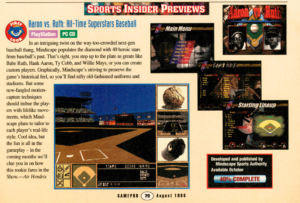
This title from NuFX is an action-and-reflexes baseball game for Windows, themed around a schoolyard pick of 36 all-time baseball legends. When playing a single game or series, the two teams are always captained by Hank Aaron on one side and Babe Ruth on the other. In the game’s Season mode, there are six total teams themed around the game’s top legends, with names like the Say Heys and the Georgia Peaches. Thirty-six players isn’t enough to fill out six teams, so the rosters are backfilled by fictional players, whose attributes can be improved over the course of a season.
Batting is done by aiming an eye reticle up and down in the zone, and moving your hitter left and right in the box to aim a swing. Similar to HardBall!, batters choose between Contact, Normal, and Power swings on a menu before the pitch (this breaks the pace of the game too much for me, especially when we have a full keyboard to use for swing choices). On the easiest difficulty, a red indicator shows the pitch location well ahead of time. On higher difficulties, this indicator gives less lead time. On anything but the lowest difficulty, the reticle does not move quickly enough to react to a pitch in any part of the zone (on keyboard or gamepad, which are both supported), so hitters need to guess the general pitch location to succeed. To have any success, hitters need to aim their reticle a bit under the pitch, for lift and power. Aiming directly at the pitch icon frequently leads to hard grounders right at somebody. And most of the game’s baserunners are a bit slow, so groundballs are death and runners will only go station to station on singles.
When pitching, players choose between four different pitches that vary to match the real player’s arsenal. As pitchers tire, their accuracy in hitting the selected pitch location will degrade. Pressing plus or minus twice will add a little more velo or take a little off of any pitch to give more variation. Fielding is straightforward but a little unreliable, with pop-ups sometimes falling in despite looking like they would be caught.
The graphics combine 3D-modeled sprites of players and 2D representations of each park. A lot of attention to detail was given to each player’s batting and pitching motions, and the back of the box advertises an “Advanced Motion Capture technology” used for this purpose. Joe Morgan’s chicken wing elbow motion as he waits for the pitch is one clear example to look out for.
I played an exhibition game as Hank Aaron’s squad and took on Ruth. After our draft, the pitching match-up was my Whitey Ford vs. the computer’s Cy Young. The starters dominated for the first four innings, before a Johnny Bench home run for Ruth’s Bambinos opened the scoring. The homer came on a Whitey Ford gunk ball that wasn’t gunked enough.
Ruth and Aaron clearly stood out over their teammates, with Ruth going 3-4 with a deep flyout and Hank Aaron hitting a game-tying home run in the seventh (and not on a power swing). Sadaharu Oh made it back-to-back home runs to take the lead, sailing over the tall opposite-field scoreboard at Ebbets Field. Pete Rose followed the two homers with a single, but quickly erased himself with a caught stealing to take some pressure off of the pitcher Cy Young.
Jim Palmer began to warm in the bullpen for Ruth’s team. But by the time he was ready, Young threw two more gopher balls to Eddie Matthews and Josh Gibson. 4-1 lead for Hank Aaron’s Hammers. Palmer got Rod Carew to fly out to finally end the inning.
Juan Marichal would later relieve Palmer and give up a second home run to each of Aaron, Oh, and Gibson. The Bambinos would score a consolation run, but Ford managed to complete the game and earn the win with a 9-2 score.
Ratings
Graphics – [4] – The motion capture work done to replicate each historical hitter’s stance and swing is the most impressive part of the game. Even the big-budget current-day baseball games don’t put this much effort into replicating each legend’s swing. The art for each park is detailed and colorful.
Sound – [3] – There is no commentary, but there are voice samples for the umpires and a stadium announcer, as well as crowd noise that reacts appropriately to play outcomes. The seventh-inning stretch features a music interlude, but it’s not “Take Me Out to the Ball Game.”
Strategy – [3] – For a computer game with direct control over players, there are a reasonable number of strategic options. Outfields can play in, normal depth, or out. The infield can normal depth, in, deep, double play depth, or guard the lines (there is no Ted Williams, and also no Ted Williams shift). Warming up pitchers is necessary and they can tire after too much bullpen prep time. Pitch-outs are a valid option for countering the running game.
Artificial Intelligence – [3] – Computer managers have a very slow hook for pitchers, only replacing the starter when he’s well and truly lost the game already. Besides that, the computer does a convincing job mixing pitches and making the right plays in the field.
Box Score – [1] – Shockingly, there are no box scores after completed games.
Rosters – [3] – If you had to choose 36 legendary baseball players to include in a game, this comes close to an ideal list. The roster is lacking Stan Musial, Mickey Mantle, and Ted Williams, but Josh Gibson and Sadaharu Oh are nice surprises. The expense and effort to put together a roster like this is evident from the back of the instruction manual, which acknowledges the many, many separate rights holders for each player’s name and likeness.
Statistics – [1] – A set of basic season statistics are tracked. It is not easy to compare different players’ statistics at a glance.
Usage/Injuries/Ejections – [1] – There are no injuries or ejections in the game. Pitcher fatigue and usage factors into performance, though it’s not easy in the Season mode menu to see which pitchers are tired.
Ballparks / Park Factors – [3] – There are only four parks available for play, but those four are well-done. The dimensions of Ebbets Field and the Polo Grounds make for different strategies and results. Willcome Field is a Field of Dreams-type cornfield park. Crosley Field rounds out the four.
Commentary – [1] – The only voice samples in the game are the umpire and a stadium announcer introducing each batter.
Scale: Ratings from 1 (worst) to 5 (best)
Observations
Aaron vs. Ruth: Battle of the Big Bats points in a few directions without quite succeeding in any of them. This isn’t a game for historical simulation fans, and it’s not a smooth, fast-paced test of reflexes. The game’s strongest point is the detailed batting stances and pitching motions. The roster includes almost all the top legends you would want, but it’s just not enough players to make for an interesting Season mode.
I prefer the approach of Old Time Baseball from 1995, which included full lineups for every team from the 1870s onwards. ’27 Yankees vs. ’75 Reds is a more interesting what-if to explore, for me, than a schoolyard draft between Aaron and Ruth.
Screenshots
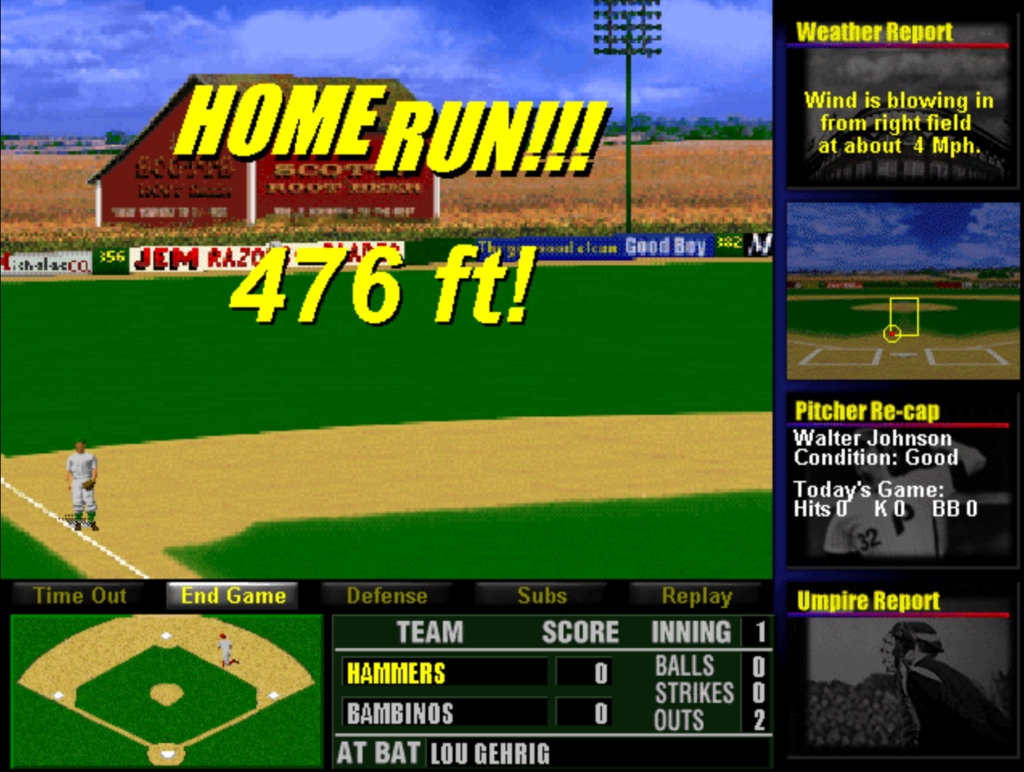
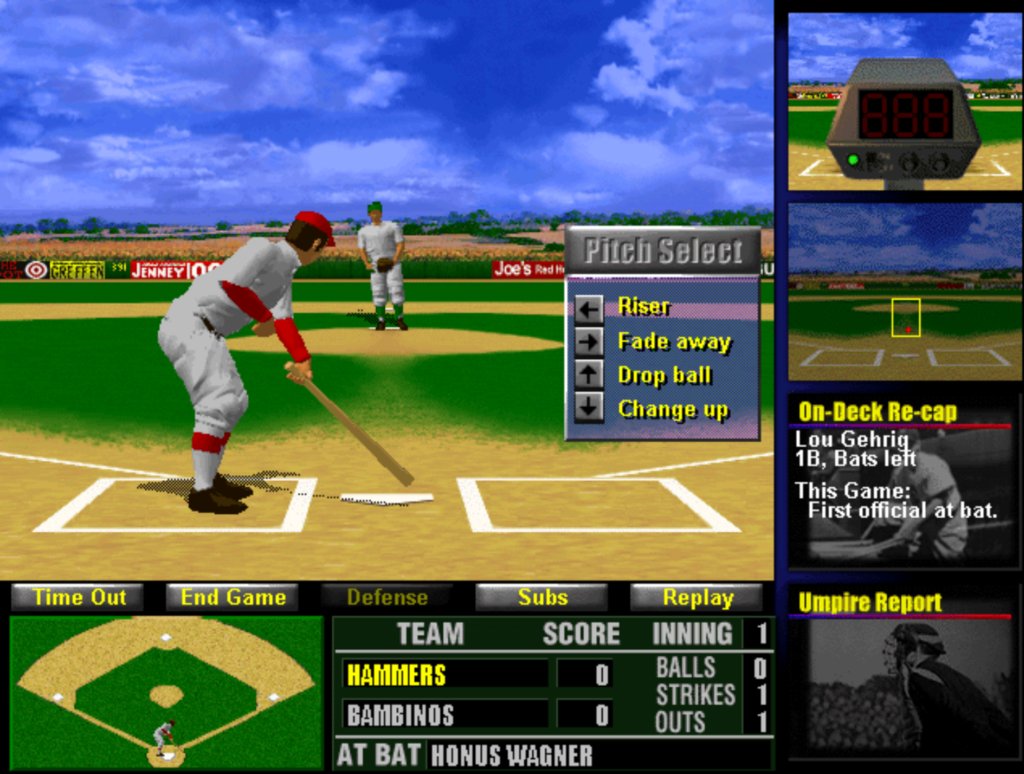


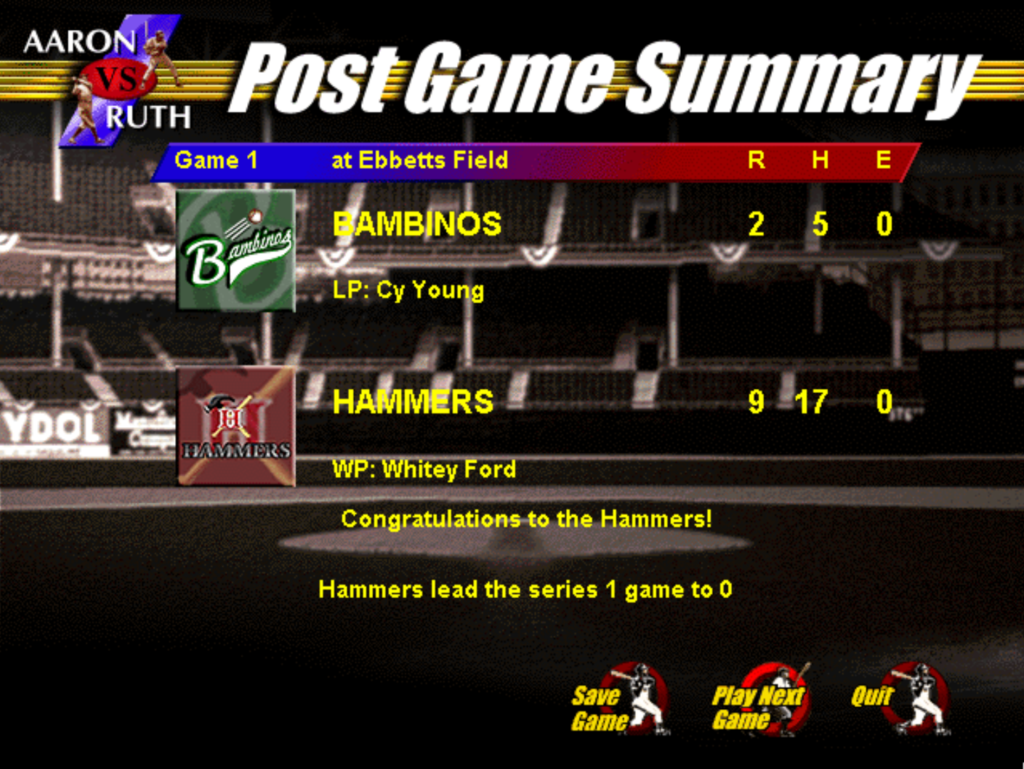
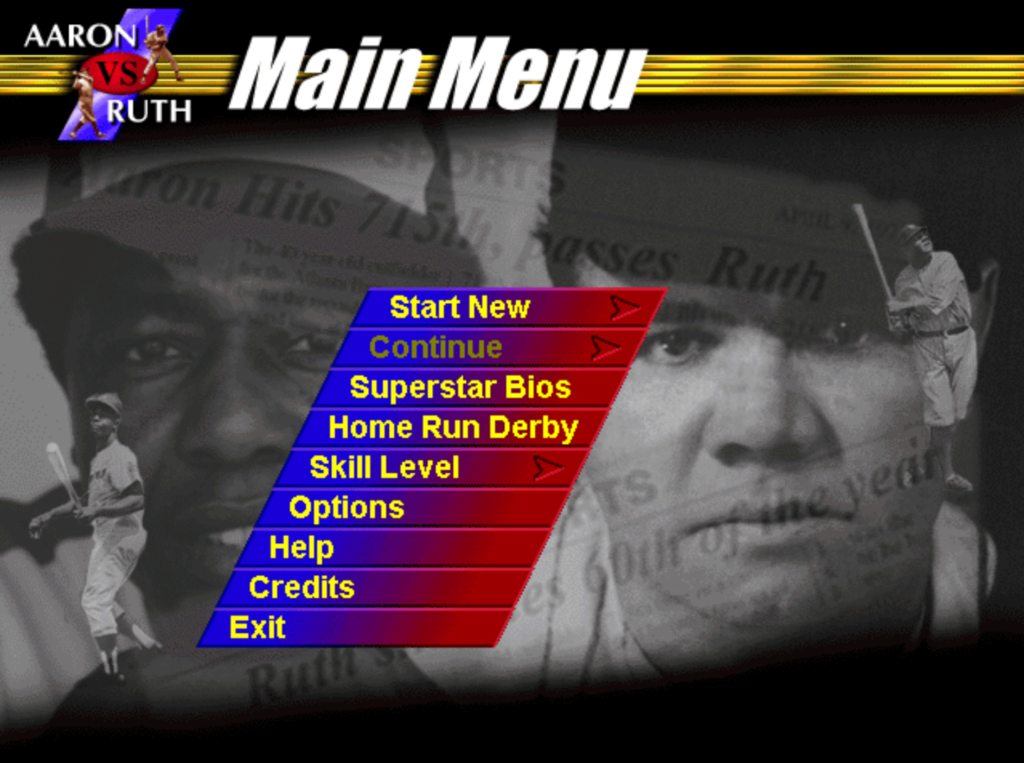
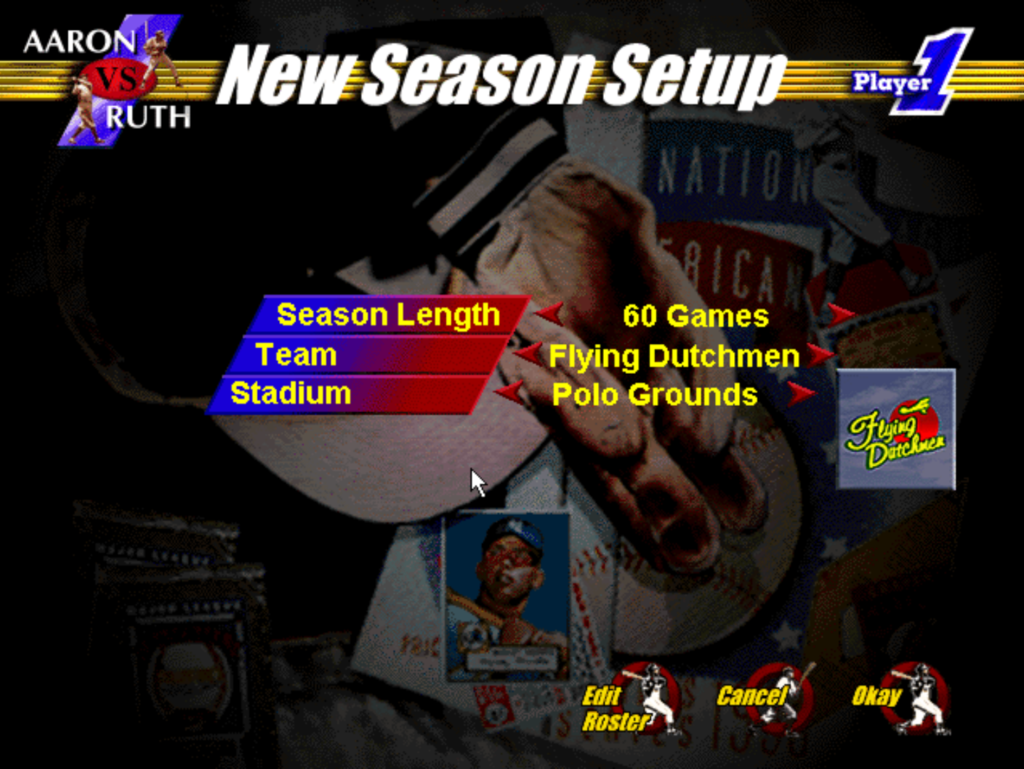
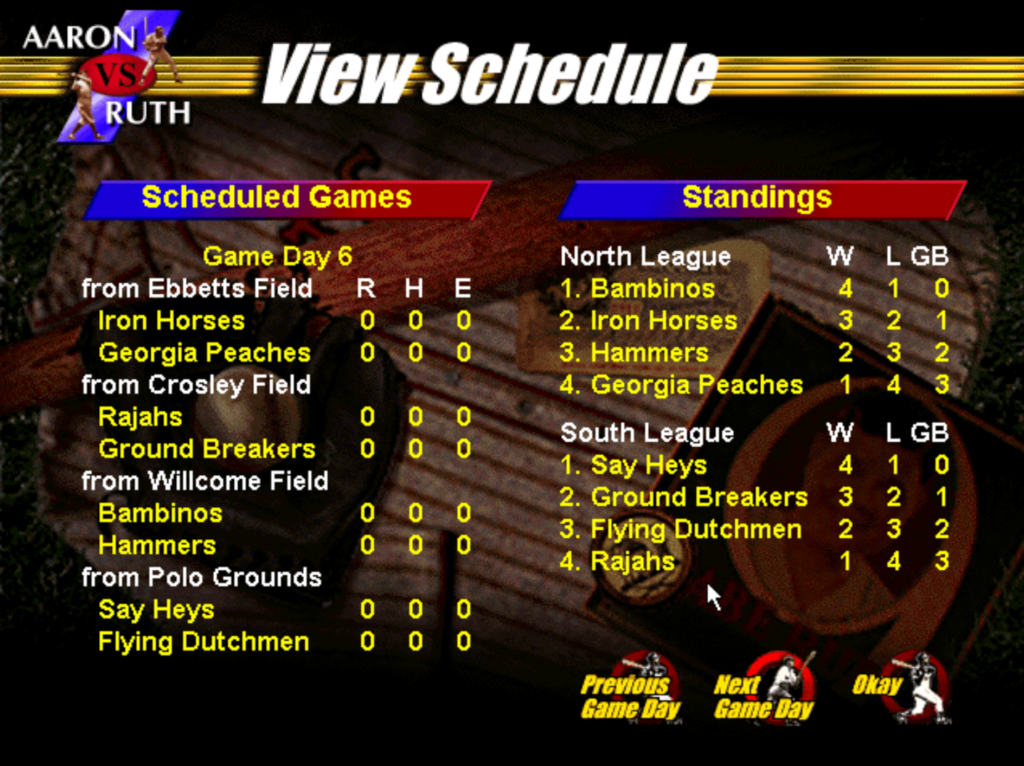
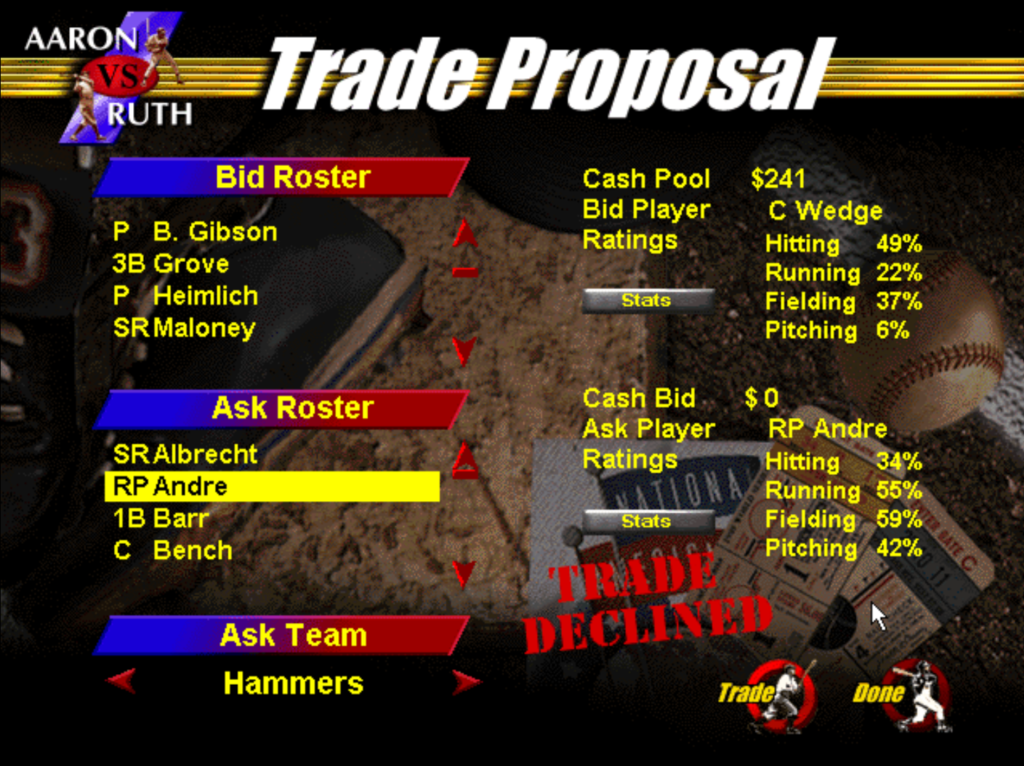
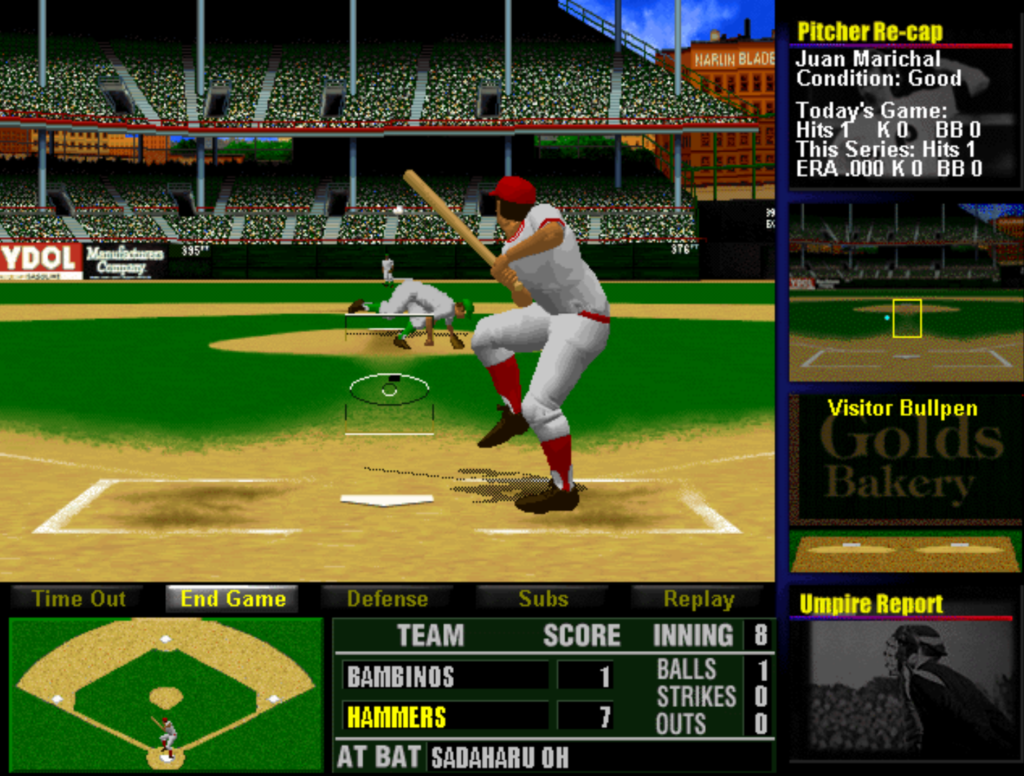
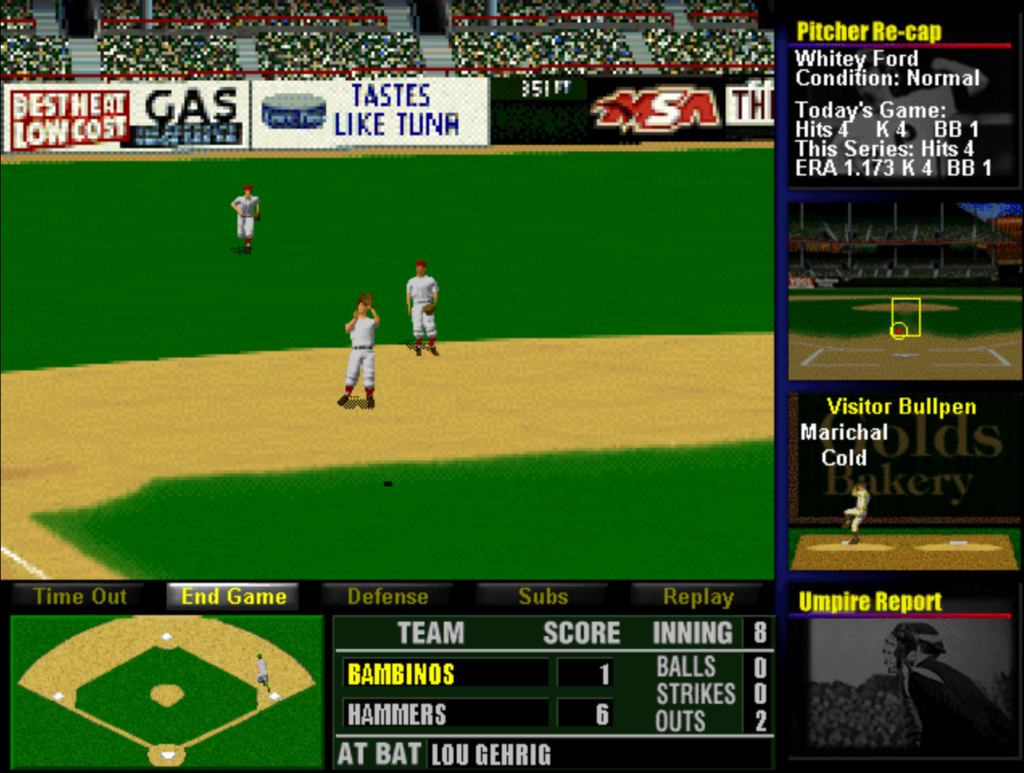
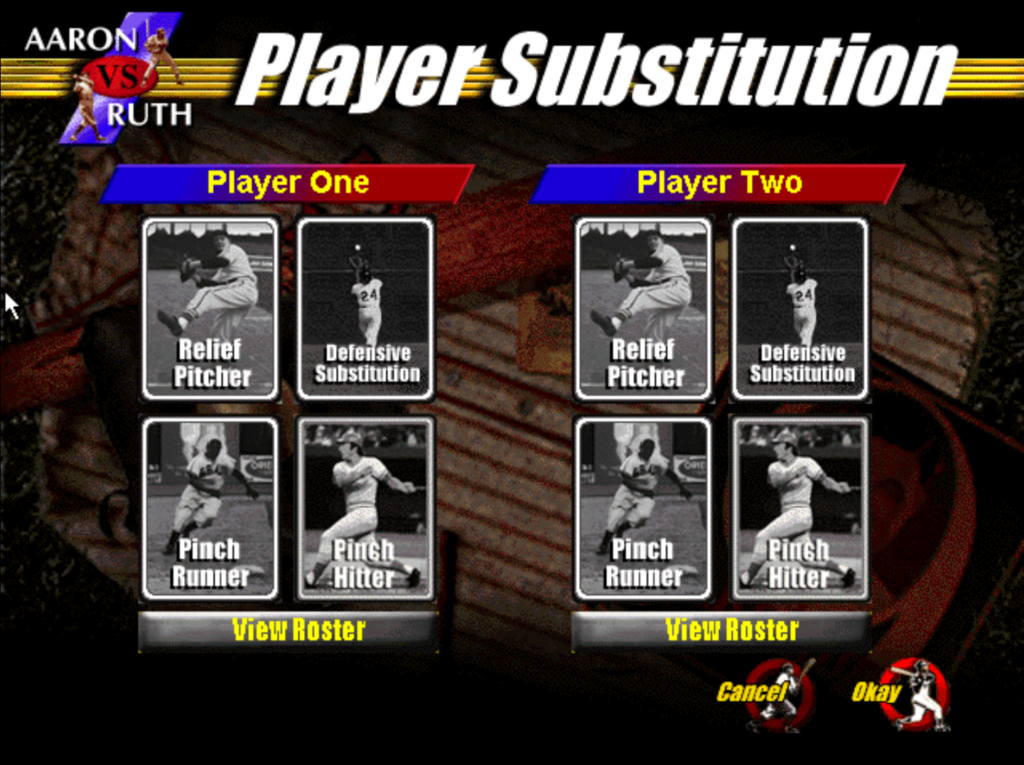
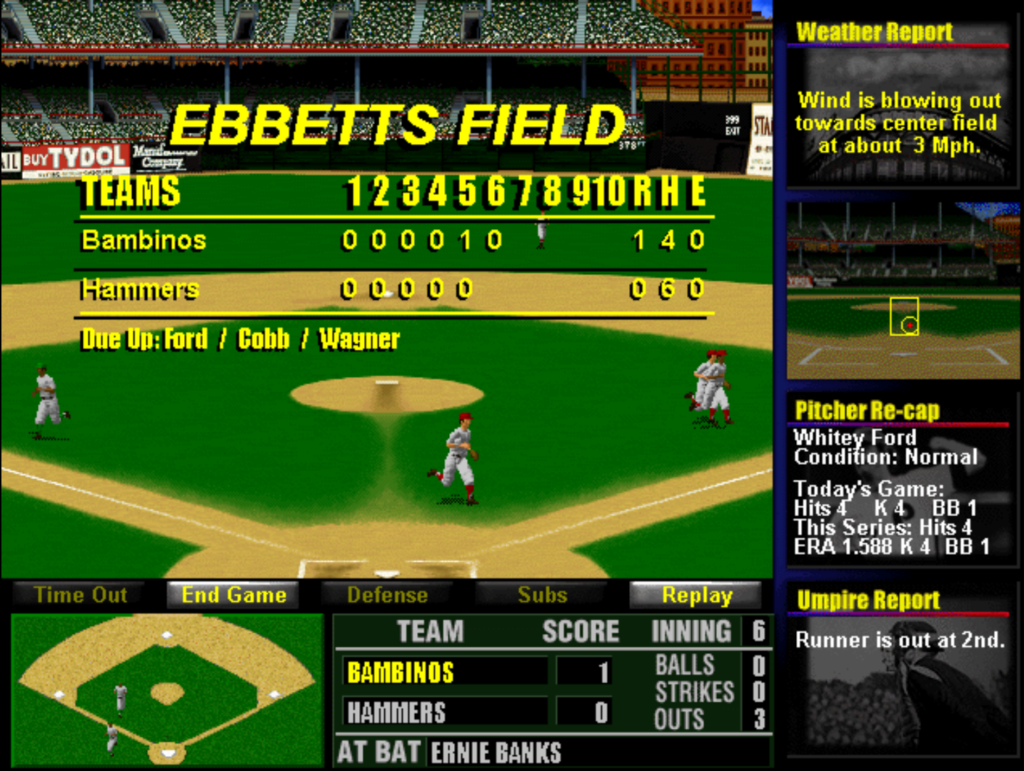
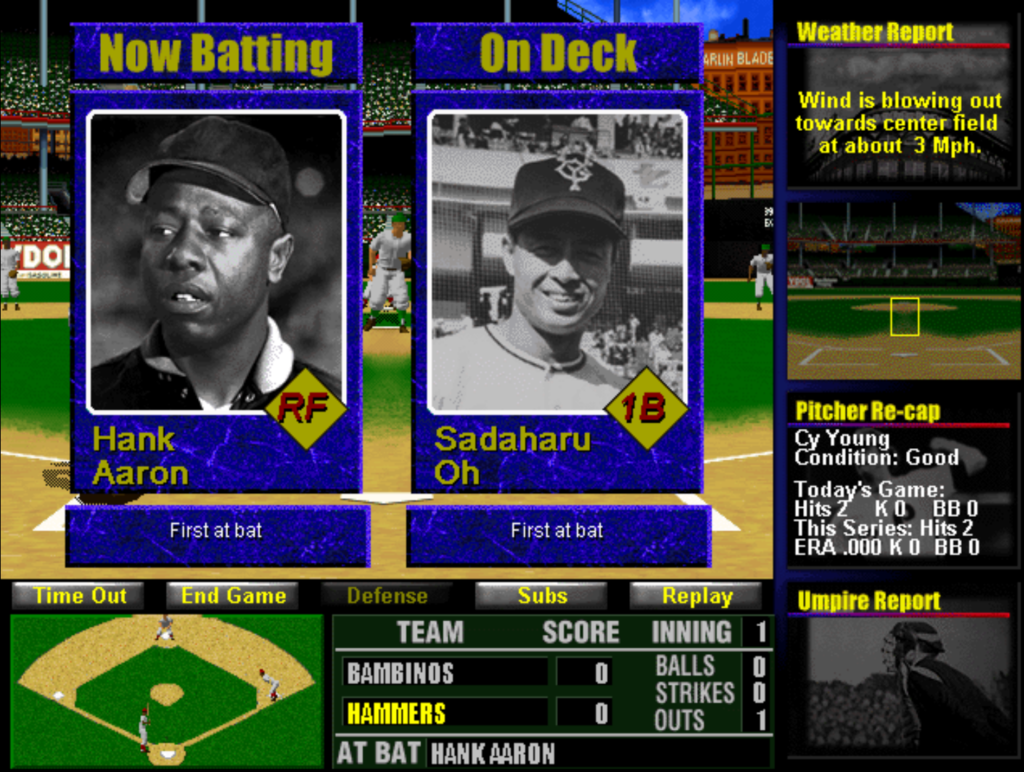
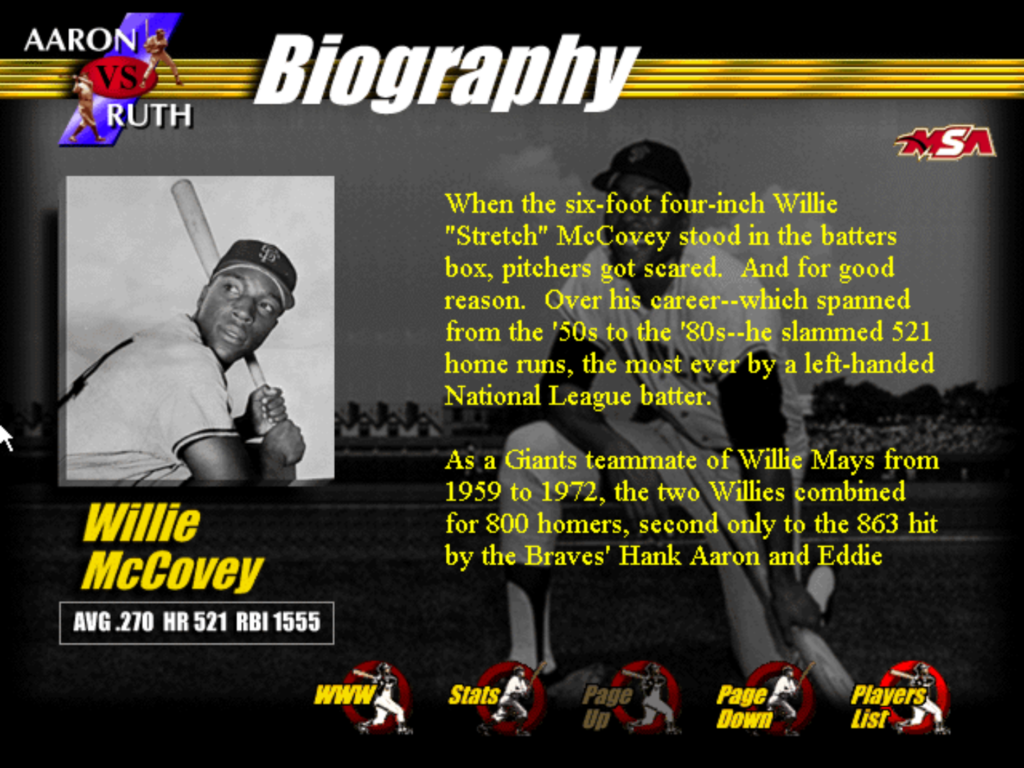
Nate Edwards writes about baseball video games new and old, foreign and domestic at 30-30.club. His non-fiction has appeared in Deadspin and Escapist Magazine and he has published fiction works with Choice of Games and The Hardball Times.
- Nate Edwardshttps://sabrbaseballgaming.com/author/30-30club/
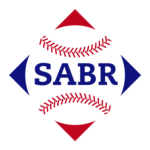


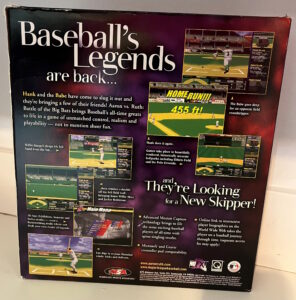


I worked on this game, testing. I remember the development cycle being caotic and inconsistent deliveries. When it was released, on Windows I believe, it showed in the final product and marketing.